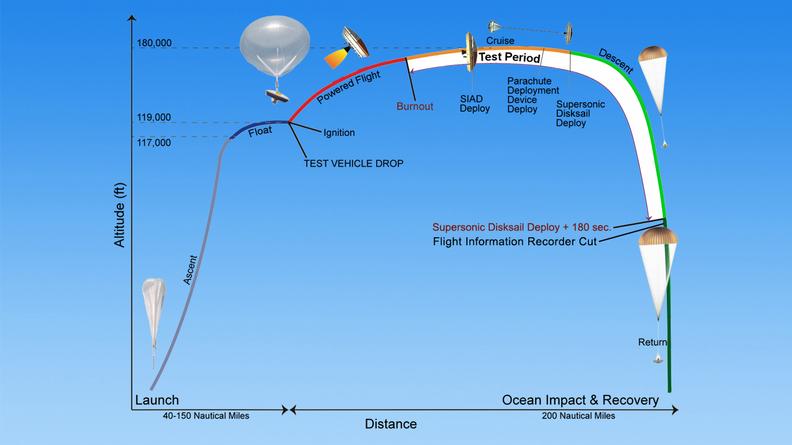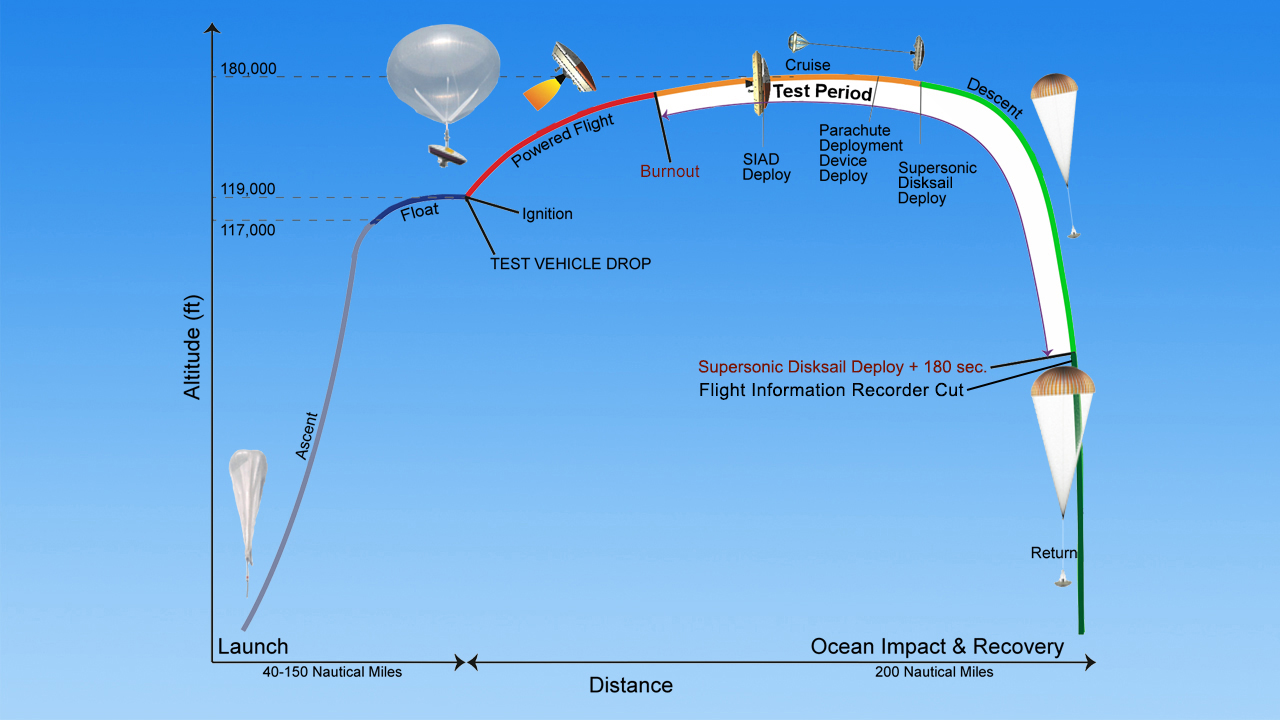Timeline of Events for Planetary Landing Test

| Credit | NASA/JPL-Caltech |
|---|---|
| Language |
|
The saucer-shaped test vehicle for NASA's Low-Density Supersonic Decelerator (LDSD) will undergo a series of events in the skies above Hawaii, with the ultimate goal of testing future landing technologies for Mars missions.
At the beginning of the flight test, the vehicle hangs from a tower in preparation for launch. The launch tower helps link the vehicle to its balloon.
At T-minus 0, the vehicle and balloon are released from the tower and begin a slow ascent to an altitude of 120,000 feet (36,600 meters), where the vehicle is released from the balloon. The float to drop altitude is expected to take slightly less than three hours.
After being released from the balloon, the vehicle's rocket kicks in and quickly takes the craft to an altitude of 180,000 feet (54,900 meters) -- the top of the stratosphere -- where the supersonic test begins.
Small solid-fuel rocket motors spin the test vehicle for stability ahead of the main motor ignition. Upon reaching its maximum altitude, the test vehicle is traveling at approximately Mach 4. The test vehicle will then deploy the Supersonic Inflatable Aerodynamic Decelerator (SIAD), which decelerates the test vehicle to approximately Mach 2.5. The test vehicle will deploy a mammoth parachute (the Supersonic Disk Sail Parachute), which carries it safely to a controlled water impact about 40 minutes after being dropped from the balloon.
Following the flight test, both the balloon envelope and test vehicle will be recovered.

